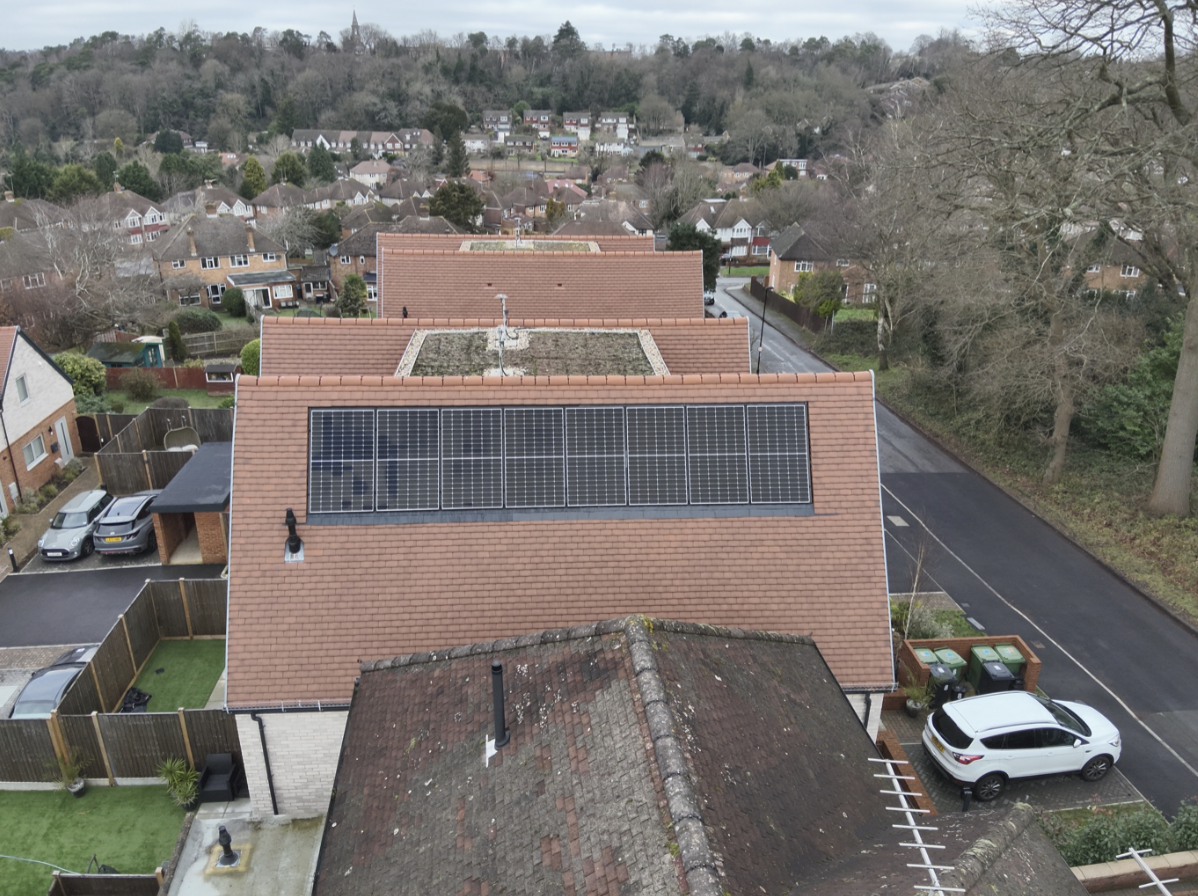Location
Sutton, Surrey
OBJECTIVES
For this project, the developer approached us to design and install solar energy systems for two properties in Sutton, London. The objective was to meet SAP (Standard Assessment Procedure) requirements while seamlessly integrating the systems into the properties’ designs. This case study outlines the system components, implementation process, and the outcomes achieved for each property.
SYSTEM COMPONENTS
Plot 9 – System Details:
Solar Panels: 8no. JA Solar 385W panels were installed on the rooftop totalling 3.08kWp. These high-efficiency panels were chosen for their ability to capture maximum sunlight and convert it into electricity.
Inverter: A 3kW Solis inverter was chosen to efficiently convert the DC electricity generated by the solar panels into usable AC electricity for the household.
Mounting System: The GSE in-roof mounting system was chosen to allow the panels to be integrated flush with the roof tiles.
Plot 5 – System Details:
Solar Panels: 7no JA Solar 385W panels were installed on the rooftop totalling 2.69kWp. These high-efficiency panels were chosen for their ability to capture maximum sunlight and convert it into electricity.
Inverter: A 2.5kW Solis inverter was chosen to effectively convert DC power into usable AC electricity for household use.
Mounting System: The GSE in-roof mounting system was chosen to allow the panels to be integrated flush with the roof tiles.
IMPLEMENTATION
- A site assessment was conducted to evaluate the orientation, shading, and structural requirements of both properties.
- Based on this and the SAP requirements, bespoke system designs were created to optimise energy production while integrating seamlessly with the building architecture.
- The GSE in-roof mounting system was installed directly to the battens on the roof of both properties ready to integrate the solar panels flush with the tiles.
- Panels were then positioned and clamped securely to the GSE trays ready for the roofers to tile around.
- The Solis inverters were installed and connected to the solar arrays to convert the generated DC electricity into AC power suitable for household use.
RESULTS
Energy Production: The combined systems on Plot 9 and Plot 5 are expected to generate significant renewable energy annually, reducing reliance on grid electricity.
Environmental Impact: The installations will collectively contribute to lowering the properties’ carbon footprints, aligning with the UK’s sustainability goals.
SAP Compliance: Both systems successfully met the SAP requirements, ensuring energy efficiency standards were achieved for the properties.
CONCLUSION
The solar installations on both these properties highlight the benefits of integrating advanced renewable energy solutions into residential developments. By leveraging high-quality components and tailored designs, the project not only met regulatory standards but also delivered sustainable energy solutions for the future. This project exemplifies how solar technology can be effectively incorporated into new-build properties to enhance energy efficiency and environmental responsibility.
Please note: The savings quoted in these case studies are indicative and will vary depending on the size of your system, your annual energy generation, and ongoing electricity costs. Actual savings may differ.


 Solar & Battery
Solar & Battery

